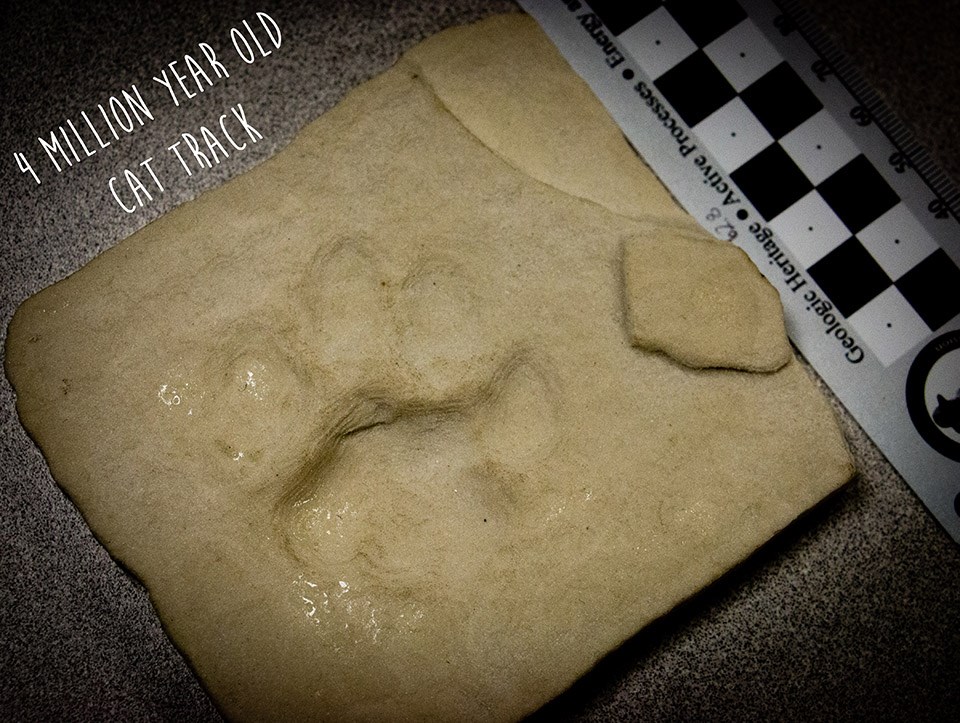Last updated: March 8, 2018
Article
#Sciencedeskdigs: Cat Track

NPS Photo/ M.Reed
How do you study something that is hundreds of miles away but also preserve it from the elements such as weathering and vandalism? Well if you were Indiana Jones you would dodge a rolling boulder, avoid the flying arrows, and then judge weight of the booby-trapped golden idol because “it belongs in a museum.” Or you can take the option where you won’t get smushed by a large rock like Geologist/GIS Specialist, Jack Wood does.
Tell me more!I leave the fossil where it is and use a technique called photogrammetry where I take well places photos of the subject in order to make a 3D model that can be used as a scientific resource from anywhere. The model shown here is of a 4 million year old cat track from Death Valley National Park and was made using this technique.
There are a lot of uses for photogrammetry. Sometimes we want to be able to leave the fossil “in situ” or in its original place. That’s where I come in with my equipment. I take precise measurements (down to the centimeter to millimeter scale!) within the models so I’m able to accurately record and archive what the fossil looked like when it was found. That lets us monitor and detect changes over time. Photogrammetry can also be used to model geologic landforms such as arches and cliffs in order study earth vibrations and detect changes that could cause potentially dangerous rockfalls.
Describe your workspace in one word?
Multifarious.
